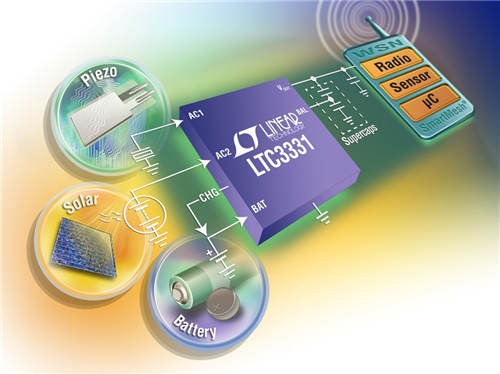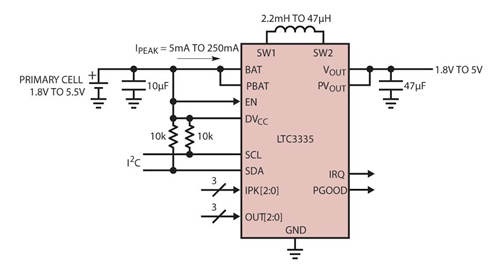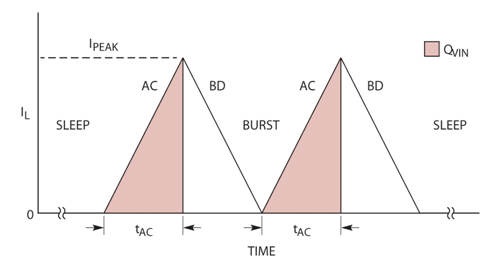Low power is the key to the Internet of Things
Time:2023-01-19
Views:1385
introduction
The proliferation of wireless sensors supporting the Internet of Things (IoT) has increased the demand for small, compact and efficient power converters customized for low-power wireless devices. One of the new market segments in the IoT market recently is the wearable electronics market, which is particularly interesting from the perspective of energy collection. Of course, wearable technology is not only for humans, but also for animals. Recent examples include ultrasonic plaque treatment, electronic saddle optimization, and collars for other animals. These collars complete tasks such as tracking, recognition, and diagnosis in various ways. However, no matter what kind of final application, most of these products need a battery as the main power supply, even if the battery will be supplemented by environmental energy (if available).
However, for human-oriented applications, it seems that there will soon be wearable fabrics that can generate electricity from different forms of environmental energy. Such fabrics may only need a small main battery as backup power. This kind of free energy includes energy generated by body temperature, photovoltaic power generated by indoor lighting and even twilight sunlight, and kinetic energy generated by daily body movement. A suitable word for this kind of fabric products may be "power suit"! A company at the forefront of this research and development field is implementing the EU-funded project Dephotex. This company has been able to manufacture wearable photovoltaic materials that are light enough and flexible enough. This material will convert light energy into electrical energy, which can be used to power various electronic devices worn by users, or to charge the main battery, or even both.
Similarly, at the low end of the power range, there is a demand for nano-power conversion of energy collection systems. For example, energy collection systems commonly used in IoT devices (think of Google Glasses) must use power conversion ICs that can handle very low power and very small current. The power and current may be tens of microwatts and tens of nanoamps respectively.
The latest and off-the-shelf energy collection (EH) technologies, such as vibration energy collection products and indoor or wearable photovoltaic cells, generate milliwatt power under typical working conditions. Although the power of this magnitude seems to be limited, the continuous operation of the energy collection module for several years may mean that the energy collection product is roughly the same as the long-life main battery in terms of the energy provided and the cost of unit energy. In addition, systems using energy collection technology can generally recharge after the power is exhausted, while systems powered by the main battery can not do this. However, most systems will use environmental energy as the main power supply and the main battery as the supplement of environmental energy. If the environmental energy disappears or is interrupted, the main battery can be connected.
Solution
Of course, the energy provided by the energy collection power depends on how long the power can work. Therefore, the main comparison index of energy collection power supply is power density, not energy density. The available power of the energy collection power supply is generally low, variable and unpredictable, so the hybrid structure connecting the collector and auxiliary power supply is often used. The auxiliary power supply may be a rechargeable battery or a storage capacitor (or even a supercapacitor). The collector becomes the energy source of the system due to the unlimited energy supply and insufficient power. The auxiliary power storage, either battery or capacitor, produces large output power, but stores less energy, and supplies power when needed, otherwise it receives charge from the energy collector regularly. Therefore, when there is no environmental energy to collect, the auxiliary power storage must be used to supply power to the downstream electronic system.
Some of the power conversion ICs launched by Linglait have the necessary functions and performance to enable such low energy collection to be used for IoT applications.
Some of the power conversion ICs launched by Linglait have the necessary functions and performance to enable such low energy collection to be used for IoT applications.
LTC3331 is a complete EH regulation solution, providing continuous output current of up to 50mA to extend battery life when collectable energy is available. When the collected energy is used to provide stable power to the load, the device does not need the battery to provide power current. When the battery is used to supply power without load, the device only needs 950nA working current. LTC3331 integrates a high-voltage energy collection power supply and a synchronous step-down/step-up DC/DC converter, which is powered by a rechargeable main battery and provides an uninterrupted output for energy collection applications such as IoT devices, wearable products and wireless sensor nodes (WSN).


Figure 1: LTC3331 can convert multiple energy sources and use a rechargeable main battery
The LTC3331 energy collection power supply is composed of full-wave bridge rectifier, suitable for AC or DC input and high-efficiency synchronous step-down converter to collect energy from piezoelectric (AC), solar (DC) or magnetic component (AC) energy. The 10mA shunt uses the collected energy to realize simple battery charging, and the low battery power disconnection function protects the battery from deep discharge. The rechargeable battery supplies power to the synchronous step-down and step-up converter, which operates within the input range of 1.8V to 5.5V and is used to adjust the output when the collected energy is unavailable, regardless of whether the input is higher, lower or equal to the output. When dealing with micro power supply, LTC3331 battery charger has a very important power management function that cannot be ignored. The LTC3331 incorporates the logic control function of the battery charger to charge the battery only when there is excess energy in the energy collection power supply. If there is no such logic control function, the energy collection power supply will be stuck at a non-optimal working point during startup, unable to complete the startup, and unable to supply power to the target application. When the collected energy is no longer available, LTC3331 automatically switches to battery. This brings an additional benefit. If a suitable energy collection power supply is available for at least half of the time, the battery powered WSN is allowed to extend its service life from 10 years to more than 20 years. If energy collection energy is more common, the service life can even be extended to a longer time. The device also incorporates a supercapacitor balancer, which allows for increased output storage.
Since the energy collected by wearable devices is very low (in the order of nano-amps to milliamps), it is imperative that any DC/DC conversion should consume as little power as possible to ensure the best energy transmission. In order to achieve such a strict goal, the DC/DC converter itself must consume a current of nanoamperes. It is for this reason that Linglait launched LTC3335, which is a nano-power step-down and step-up DC/DC converter, integrated with coulomb counter, for IoT products in WSN, wearable devices, and general energy collection applications (see Figure 2).


Figure 2: Typical application schematic diagram of LTC3335 nano-power step-down/step-up converter
The LTC3335 is a high-efficiency, low-quiescent current (680nA) converter. Its integrated coulomb counter monitors the cumulative discharge of batteries in long-life battery-powered applications. This counter stores the cumulative discharge quantity of the battery in the internal register, which can be accessed through the I2C interface. The input of the step-down and step-up converter can operate at a low voltage of 1.8V, providing 8 pin optional output voltage, and the output current is up to 50mA. In order to adapt to various types and sizes of batteries, the selection range of peak input current can be from as low as 5mA to as high as 250mA, and the programmable range of full scale coulomb counter is 32768:1.
Whenever the buck/boost converter provides current to the load, the integrated accurate coulomb counter of the device records the accumulated charge transferred from the battery. When it is not in sleep mode, the step-down to step-up converter works as an H-bridge for all battery and output voltage conditions (see Figure 3).


Figure 3: Timing diagram of LTC3335 operating in H-bridge mode
Switches A and C are turned on at the beginning of each burst cycle. The inductor current ramp rises to Ipeak, and then switches A and C open. Then, switches B and D are turned on until the inductor current slope drops to zero. This cycle is repeated until Vout reaches the sleep threshold. If Ipeak and switching AC (ON) time (tAC) are known, the BAT discharge coulomb amount (shaded area in Figure 3) can be calculated by counting the AC (ON) period and multiplying it by the amount of charge during each AC (ON) period. The amount of charge during each AC (ON) period is given by the following formula:
q AC(ON) = (Ipeak * tAC)/2
When the step-down and step-up converter is working, the LTC3335 measures the actual AC (ON) time relative to the full scale ON time (tFS, about 11.74 µ s). The full scale ON time is internally adjusted to compensate for the error of the actually selected Ipeak value caused by power supply, temperature and process changes. In this way, a very accurate "measured value" can be generated for the amount of charge transmitted by the battery in each AC (ON) cycle.
conclusion
Obviously, there will be many WSN, wearable products and IoT products that need nano-power DC/DC conversion and coulomb calculation to ensure the best performance and life of these products. However, such conversion products were not available until recently. Due to the presence of suppliers such as Lingleite, the designers of nano-power products will have a large number of conversion solutions to choose from
|
Disclaimer: This article is transferred from other platforms and does not represent the views and positions of this site. If there is any infringement or objection, please contact us to delete it. thank you! |











